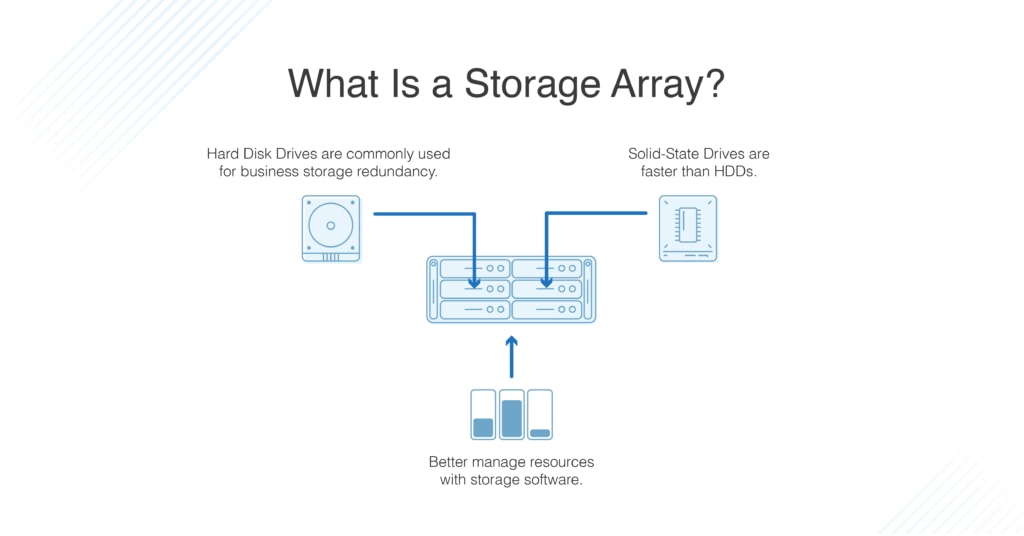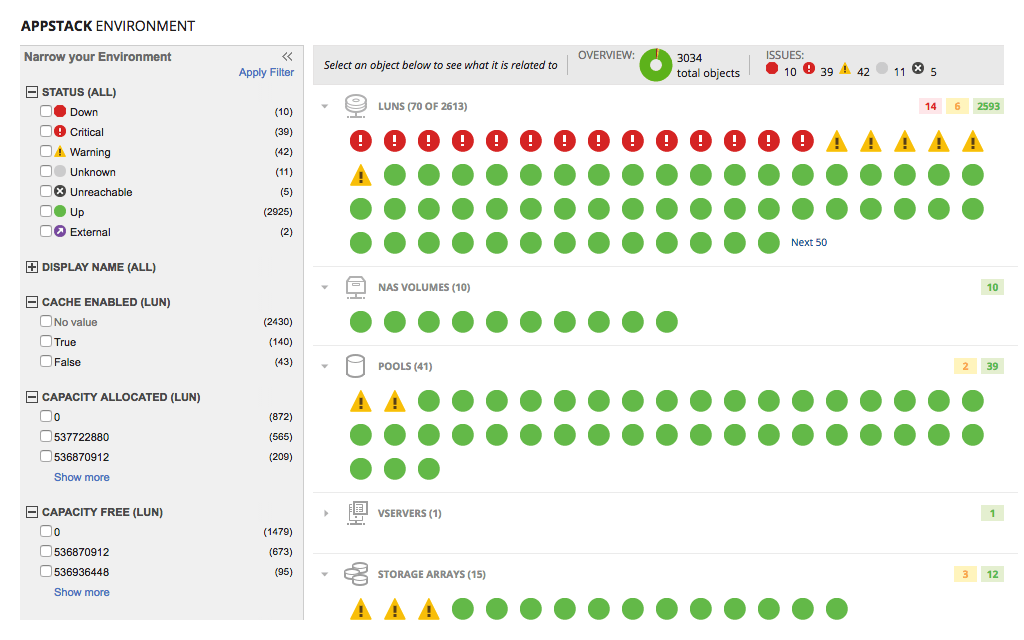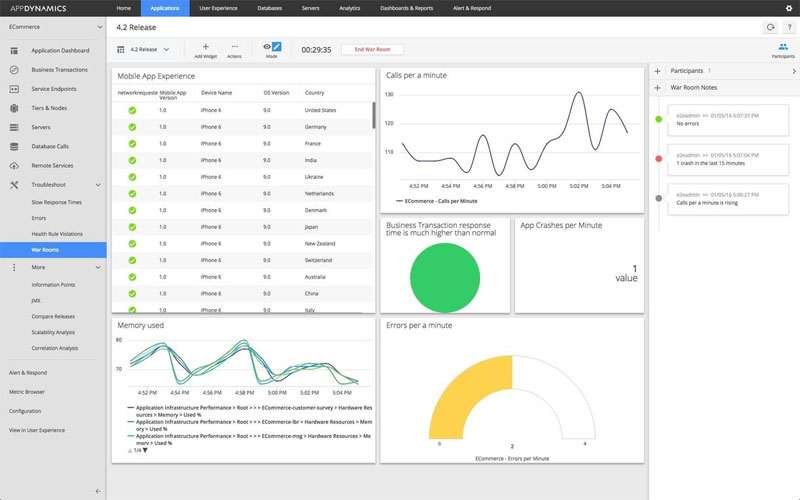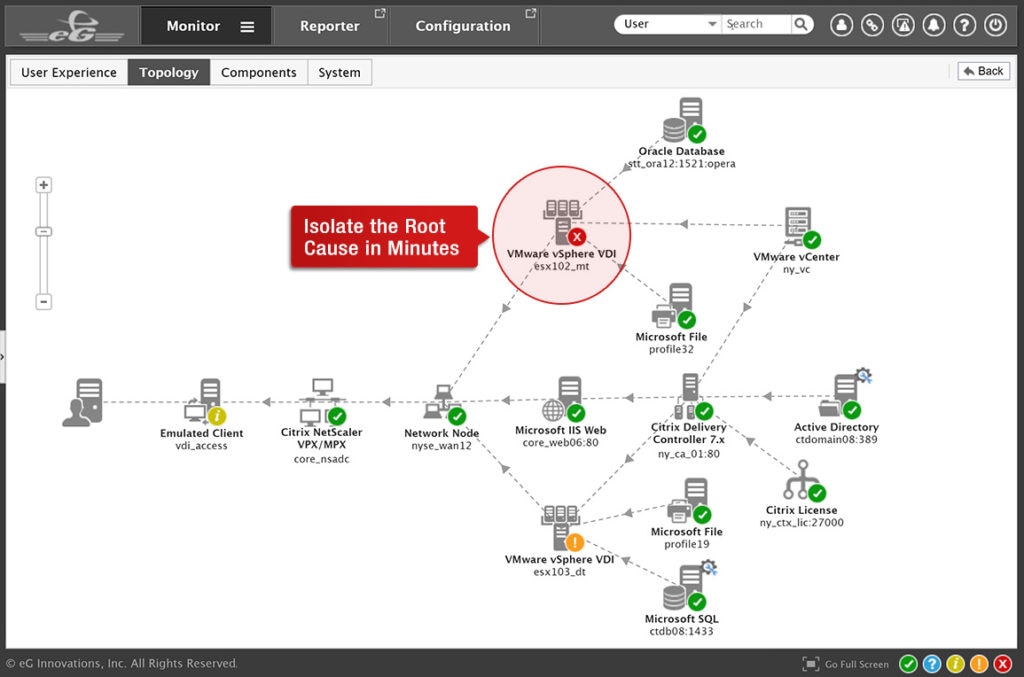A storage array, also called a disk array, is a data storage system for block-based storage, file-based storage, or object storage. Rather than store data on a server, storage arrays use multiple drives in a collection capable of storing a huge amount of data, managed by a central management system.

The performance of storage arrays can be improved by using a high-quality management system to keep track of capacity, errors, and trends. In this guide, I discuss the basics of storage arrays, including what they are, how they work, common setups of data centers, and how monitoring tools can help improve array performance. I also review the key features of several of these top solutions, and explain why Storage Resource Monitor is my best pick due to its unified management system, performance optimization capabilities, and storage capacity forecasting features.
How Do Storage Arrays Work?
What Is a Data Server?
What Does Modern Data Center Architecture Look Like?
How to Improve Storage Array Performance
Best Storage Array Monitor
How Do Storage Arrays Work?
Storage arrays keep storage separate from servers using a collection of hard disk drives (HDDs) or solid-state drives (SSDs). In some cases, they use a combination of both so they can scale much more efficiently than the storage capacity of a collection of servers.
HDD storage arrays, or disk arrays, are commonly used in business environments for storage purposes and have excellent redundancy features to help protect data. For example, redundant arrays of independent disks (RAID) controllers are used to make copies of the same data across multiple hard disks. This protects the data from loss if one of the disks fails, as all the backup copies are still available.
An SSD storage array, also called a flash storage array, has the same basic storage array architecture as an HDD array but will operate much faster. However, HDDs are cheaper, so they’re sometimes used in combination.
Storage arrays are critical part to storage networks, allowing the storage functions of the network to be completely separated from the LAN or WAN connecting all the devices within an organization. Disk array storage separates the network transmission and connection functions from the data storage functions and allows stored data to be accessed by multiple servers at the same time. This means servers across a business can all access data from the same storage array.
What Is a Data Server?
A data server, also known as a database server, is the underlying back-end hardware dedicated to providing the services necessary for supporting one or more database management systems. These services include tasks like storing, archiving, processing, analyzing, and ensuring security for data—generally all tasks not specific to end users. The data server also ensures data is accessible for the correct clients, based on the client/server architecture of the database application.
The server can accommodate large amounts of data in a range of formats—relational databases, non-relational databases, and even flat files. The DBMS is installed on the data server, and other systems can then access the data. However, from an IT perspective, the term “data server” isn’t always precise—it can refer to hardware, the software platform, or a combination of the two. As software, the data server may be considered an “instance.”
What Does Modern Data Center Architecture Look Like?
Datacenter storage systems have evolved over time, and these days, as speed and flexibility become increasingly important, many companies rely on a mix of physical and virtual infrastructures, like hybrid clouds. Before all-flash arrays and virtualization, data storage relied on hard storage disks receiving I/O requests. To understand modern data center architecture, it’s important to first understand typical modern storage systems in general.
A few types of data storages allow differing amounts of access and scalability. It’s important for the architecture to be non-blocking, allowing simultaneous requests without queuing. A storage subsystem consists of several components—host adapters, device adapters, the cache, and processors—and the communications architecture connects these parts:
- Bus architecture allows access for only one device at a time. It’s simple and cheap, but difficult to scale
- Switch architecture allows components to be attached to switches by links, with up to 64 connections on each side of the switch. Most large storage subsystems use this form
- Matrix architecture links components with each other component it needs to talk to, creating a web of connections and allowing the system to easily scale
More and more often, data center storage models also rely on virtualization, which helps with the consolidation of storage and servers. Essentially data center virtualization consolidates physical servers to virtual machines, and virtual machines are connected to a L2 virtual access layer. Incorporating storage access for the VMs means consolidating storage area networks (which allow for centralized, all-flash storage, with lower latency) as well as network-attached storage. While these are legacy forms of storage, they’ve evolved to now work more effectively with modern data storage models.
How to Improve Storage Array Performance
Data storage arrays need to be carefully managed to ensure disks don’t reach capacity and affect application performance for users. I highly recommend using a management tool to monitor and optimize storage array performance, which is crucial to making sure data can be accessed by multiple servers without delays. Here are my top three picks.
1. SolarWinds® Storage Resource Monitor
One of the most important tasks of managing storage resources is ensuring you have a good setup for capacity planning. This means keeping track of all your storage resources and forecasting and allocating new storage before you need it to reduce business delays and service downtime. Storage Resource Monitor (SRM) provides insights into each layer, array, pool, and LUN/volume to take stock of storage capacity growth and to check when space will run out. It can also quickly identify any throughput problems or latency hotspots, so overworked resources can be found and fixed before they cause major performance issues.

SRM includes a graphical interface proprietary to SolarWinds products called AppStack™, which displays every layer of the network and storage infrastructure. It shows the virtual machines and applications dependent on each storage element, allowing you to identify dependencies and change things around as needed. You can also see information for multiple vendors, which means you don’t need to keep track of everything manually.
2. AppDynamics Storage Performance Monitor

AppDynamics storage performance monitor is another nice tool for network monitoring and management, including storage and server capacity. It displays real-time information about throughput and performance metrics for all your storage arrays, so you can quickly and easily pinpoint storage capacity or performance issues. It also includes tracking and trending performance data, so it can predict capacity issues ahead of time.
It automatically discovers and maps your critical storage services and components, so you don’t need to do this manually. For alert purposes, it also integrates with ServiceNow, PagerDuty, and Jira.
3. eG Enterprise Storage Monitor

eG Enterprise storage monitor is a reporting, diagnostic, and monitoring tool designed specifically for storage infrastructure. It includes a centralized console where you can see all your network’s storage devices and examine performance metrics across tiers, helping you more easily discover and troubleshoot bottlenecks. It can cover numerous different types of storage devices and provides excellent data on fiber channel switches, host ports, controllers, LUNs, physical disks, caches, enclosures, and hosts.
The eG Enterprise tool provides performance baselines alongside historical trends and reports, so you can figure out how much capacity you currently have, then plan for future growth. The performance features allow you to see whether the traffic in any disk group is abnormally high, or whether any disks are slow during read or write operations. You can also see if the disk array has a lot of outstanding requests. These features allow you to pinpoint where in the storage infrastructure any performance problems are coming from.
Best Storage Array Monitor
Out of all the products on the market for managing your storage arrays and data systems, my recommendation is to check out Storage Resource Monitor. It’s a high-quality, professional storage monitoring solution with all the tools you need for capacity planning, performance management, and keeping your storage systems totally under control. SRM also comes with a fully functional 30-day free trial, so you can check it out and see if you like it.
Further Reading
Best Database Management Software – Performance matters at every level of your business, from front-end applications to database access and storage setups. Check out my reviews of the best database management software, so you can make sure each part of your network is properly managed and tuned.


